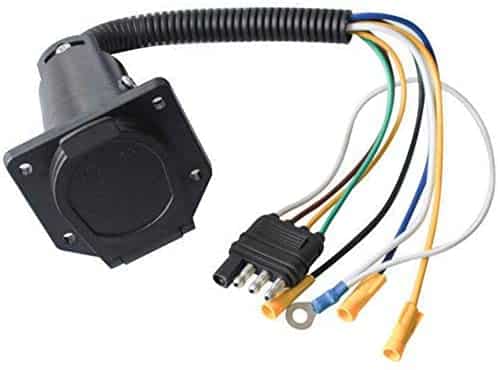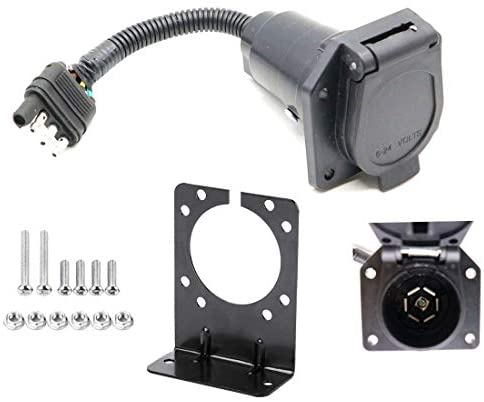It’s fair to say that Starfield is one of the most anticipated games and it’s not difficult to see why – Bethesda, for all its faults, has built its empire with large-scale open world RPGs. There’s a reason games like Skyrim remain popular to this day – the meticulously crafted worlds and sense of freedom capture the imagination. On paper, Starfield feels like the logical conclusion, a game that extends beyond a single planet through the reaches of space. I thought it would be fun to dive into Bethesda’s presentation and see what we can glean about the game – from basics like image quality and performance to the overall approach to tech and design.
Let’s start with rendering resolution – the trailer is presented at native 4K but shots vary in clarity. Interestingly, gameplay sequences seem to lack any sort of anti-aliasing, so you get razor-sharp edges with visible aliasing throughout. Conversely, the more cinematic shots use TAA in a manner similar to Fallout 4, which ought to be more in line with what we’ll see in the final product.
Beyond simple resolution, we can get a sense of the dev team’s design goals by looking at how Starfield handles wide open areas on-planet, interior spaces, character rendering and finally outer space. For example, in an outdoor scene, we can see the game has long distance shadowing, which is crucial for maintaining distant detail. This is one of the key problems we identified with Halo Infinite and it’s great to see that Starfield has a solution in place.
Starfield also appears to feature a system which displays a localised fog volume within valley crevices, which looks great. In general, atmospheric rendering appears reasonably robust from what we can see in this demo. What I’m not clear on yet is the sky system – it looks very promising but due to the low bitrate of the trailer footage we had to look at, it’s tough to tell if we’re looking at a proper volumetric sky system or a simple sky dome. Regardless, it does produce attractive results – we just need to see how dynamic it is in the final game.
Everything is tied together by the terrain system then – it’s likely that planet surfaces and structures are built using a combination of procedural generation and hand-placed assets, which is a common approach these days. The terrain rendering itself resembles earlier Bethesda games, but pop-in is kept to a minimum and detail is evident far out into the distance. While it’s attractive, the rendering features are not pushing any boundaries – which is understandable given the game’s large scale and lengthy development time.
Inside, things are different – large-scale shadows, which were low-res and grainy outdoors, become crisply-defined internally. This section evokes a mood not unlike Doom 3, with direct lights piercing the darkness as specular highlights play off the surfaces. Compared to Fallout 4, the leap in fidelity is significant, as that game features rudimentary interior lighting and a distinct lack of texture and object detail.
This does raise one interesting omission – the lack of reflections. In the original teaser trailer, we noted almost RT-like reflections, but in every gameplay sequence there’s no evidence of screen-space reflections, let alone RT reflections. At best, we see basic cube maps. For a setting flush with metallic surfaces, this strikes me as a little strange, and screen-space reflections would go a long way to improve overall image cohesion.
There are a lot of positive elements here too. Weapons, for instance, look fantastic. I was never a fan of the designs in Fallout 4 – the model and animation work left me cold – but Starfield introduces weapons which appear both stylish and powerful. Enemy animation is generally much better as well. As an RPG, there is still a sense that you’re draining a life bar more than directly dealing damage, but the reactions are greatly enhanced. The only thing missing is per-object motion blur on weapons and enemies.

Character rendering has also improved markedly since Fallout 4, especially when you look beyond the character creation screens and instead focus on the actual in-game appearance. Subsurface scattering, which is absent through all of the scenes, could improve things even further, accurately rendering how light interacts with the surface of skin. It is present on the ears in the footage we saw, but it’s not applicable to the rest of the skin which over-accentuates the normal maps. Also, the tear duct geometry is a little too shiny, picking up lights to the point where it almost seems to glow. Beyond these minor points though, there’s a big boost to animation quality. Conversations in Fallout 4 featured stiff and even ugly animations, while Starfield seems far more elegant in comparison.
The last major setting of Starfield is outer space and while we’re only given a short look, the effects work such as laser blasts and explosions, are promising – certainly a step up from the low-res smoke when landing on a planet. The big question I have regarding space travel is less about visuals and more about possibilities – I’d love to see ship management play into travel. Imagine getting up from the captain’s chair to explore the ship, while managing resources and systems alike. I think this could make the journey between planets more engaging and challenging. It’s unclear if this is an option, however, or if the player simply ‘becomes’ the ship while flying.
There are a few other tech critiques worth mentioning too, namely the game’s indirect lighting. This has become a major focus in recent years and is key to realistic rendering – simulating the phenomenon of photons bouncing off a surface and illuminating, indirectly, another area. The issue right now is that areas that are not directly lit in Starfield exhibit a uniform grey-ish color that doesn’t match the lighting results you’d expect. Ray-traced global illumination would work well here, but has a heavy performance cost. An offline baked solution using probes could work too but, with so many planets, the GI data would likely be far too large. This is a difficult problem to solve when building a game on this scale.

Then there’s performance. The trailer footage we have was encoded within a 30fps container, which limits the amount of analysis we can undertake. However, there still appear to be issues worth flagging, namely the fact that all gameplay footage exhibits significant performance hiccups and regularly dips below 30fps. This isn’t unusual for a game in this phase of development, but Bethesda’s track record of highly variable launch performance on console gives me pause. It’s the most noticeable blemish on the presentation and I hope performance will improve by launch, but we’ll have to wait and see.
The other aspect I’m curious about relates to cities – in prior Bethesda releases, larger cities were typically divided up by loading screens while smaller towns were seamless. So can you land on a planet and make your way to a large city without loading screens? I hope we’ll find out soon.
Still, while I have my nitpicks, Starfield is still shaping up to be the most attractive Bethesda game to date – most of the uglier bits that plagued Fallouts 4 and 76 have been eliminated and we’re left with some beautiful environments to explore instead. Starfield also showcases structures and scale unlike anything they’ve built in the past. The whole ‘1000 planets’ feature seemed ridiculous at first, but you can imagine that key planets have been built out and carefully designed while they can lean more heavily on procedural generation to handle the rest. If the gameplay structure properly supports this, it could be fascinating. Even as someone largely burnt out on open world games, I’m highly intrigued by Starfield.
All of this means that Starfield is going to be one tough game to analyse when it releases next year – but I’m looking forward to the challenge.



